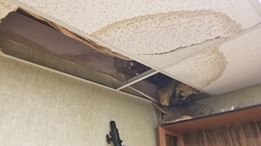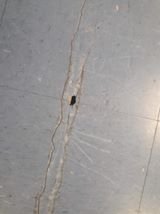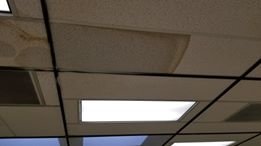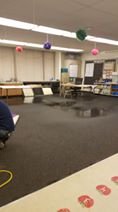Decaying school buildings and lack of up-to-date technology are a reality for millions of students and educators across the nation. Half of America’s public schools are more than 50 years old, and campuses in poorer rural and urban areas tend to have the worst facilities because they lack local revenue to pay for school upkeep and modernization projects.
K-12 public schools are the second largest national infrastructure sector, topped only by highways. Yet there is no dedicated federal funding for school facilities.
The overall condition of public school facilities gets a D+ on the American Society of Civil Engineers’ 2017 infrastructure report card. Over 19,000 schools serving 11.6 million students are without the minimum connectivity necessary for digital learning. Cuts to state education budgets over the last decade have only exacerbated the issue of aging buildings.
That’s why educators are embracing a plan by House and Senate Democrats to invest more than $100 billion in America’s public schools.
The Rebuild America’s Schools Act would fund $70 billion in grants and $30 billion in bonds to help states address critical physical and digital infrastructure needs. Specifically, the bonds target high-poverty schools whose facilities pose health and safety risks to students and staff. The act is an important step in securing safe, high-quality public schools for every student.
The total infrastructure package unveiled by House Democrats would improve roads, bridges, and transit systems, also influential in the day-to-day lives of our students and educators. House Speaker Nancy Pelosi (D-CA) said school modernization also needs to happen this year; but timing is unclear. It’s up to us to make sure Congress knows that schools and the Rebuild America’s Schools Act need to be part of any infrastructure package that moves forward.
To build support for school modernization, educators from across the country have shared their stories:

I’m one of the fortunate teachers. My district has passed, with city assistance, multiple bond measures to update schools–but none have been enough to update all. My school is scheduled for updates in the 2021-22 school year. I currently do not have air conditioning, and teach in 90 degree or higher temperatures for as many as eight weeks at the beginning of each school year. I have only four electrical outlets in my kindergarten classroom, one on each wall. After recent storms, ceiling tiles fell in the hallway of my building, which was built in the 1930’s. Weeks later a district crew came out, but didn’t replace the stained, loose tiles because they were fairly certain that they contain asbestos. I’ve seen worse at other schools, but I know that all students deserve better. — Jill T., California
Pennsbury School District has many buildings and structures that are 50 years old and older. My building just underwent a three-year renovation that removed asbestos and other toxic materials. After working in the building for 13 years, we finally have air conditioning. I remember the year that my room was over 119 degrees. The children got to go home, but I had to stay and work, while I was pregnant, in those conditions. Right now at our high school, there are garbage cans in the hall to collect rain water. There are currently three buildings in dire need of renovations. These infrastructure needs, which will cost millions of dollars, impact the local tax payer. We need federal funds to help pay for these items. — Colleen B., Pennsylvania

I am a speech language pathologist at a public school in San Diego. I’ve worked at a few different schools in my district, so I have witnessed various alarming issues with building infrastructure. The school I formerly worked in hadn’t finished the roof in some parts of the building. Every time it rained, my office would flood and my educational materials would get ruined. At my current school, there is lead in the pipes, due to the age of the building. The children are instructed to run the water for one minute before drinking. It horrifies me that children are drinking contaminated water. Please fund the modernization of our public schools.– Rachel, N., California
At my school–Filer High School, built in 1996–we have mice that come in each winter and leaky roof problems throughout this “new” school. Our roof is not well insulated, and leaks appear after every snowfall. The school was built by a company that submitted the lowest bid and then they ran out of funds to complete the job. Because of this, we did not get an auditorium for our drama program and other promised constructions were cut. I wish we had the funds needed to provide Idaho’s kids with the excellent facilities that other states enjoy. — Karen F., Idaho
As a retired Special Education teacher, I can testify that the public schools are in dire need of an upgrade. Warm running water to wash our hands would be an upgrade in my old classroom. I purchased colorful area rugs to keep our classroom warm in our foggy San Francisco climate. So many necessities were either purchased by me or donated by some of the parents of my students. Some were little things that would help learning more fun, motivating and successful. Dear members of Congress: Please do not forget the public schools. Students will be future voters. Please do not neglect or take them for granted. –-June D., California

I’m a public school teacher in rural Maine. The school I’m in right now looks okay because we try to keep it clean, neat, and organized. The real story is the underpinnings are old, from the furnace, to the electrical, to the plumbing! In winter, the bathroom by my room is like using an outhouse. We have a ceiling tile out to keep it from freezing up. Last weekend a hot water pipe broke and flooded our middle level, locker room, and under our stage. Everyone is working together to make it work for our students. We have been on a state list for 3-4 years waiting for funding for a new school. Our kids need it!!–Jane S., Maine
Over the last 10 years my class has had multiple leaks where rain water drips down onto tables or the carpet. We put garbage cans in place to catch the water, but it will travel down the wall, ruining student work on display and saturating ceiling tiles until they come crashing down. The district told me they were going to replace the entire roof last summer, but nothing was done. So, we just continue to do what we can with what we’re given. It’s worth noting that I’m speaking of one of the most ‘affluent’ districts in the Bay Area. Please find a way to allocate more funding for public education. — Joe S., California
The high school I worked at, Old Mill High School, was opened in 1976. Home of The Patriots, this school was conceived as an open space school and built by the lowest bidder at the time. These open classrooms quickly were found to be impractical at best and downright disruptive to learning at worst. Almost 50 years later the school has erected partial walls, which create a visual barrier but noise (and sometimes objects) pass through easily. While my former district had slated this school for replacement, the wait has been long and there are many such schools waiting in a LONG line. Old Mill High has fantastic faculty. but the challenges of teaching in this large school are compounded by the physical layout. And don’t get me started on the mice who also call Old Mill home. — Angela B., Marylan

In San Diego Unified School District, we began implementing computer carts in the classrooms, along with interactive smartboards, about five years ago. The computers were designed to be used with a hardwired internet connection, but the district installed them for use with WiFi. Our connection is very weak when all of the students are using the computers at the same time, so they are often logged off during important tests and assignments, since there are too many computers going through the same router. The WiFi code cannot be blocked, either, so students logged in on their phones (against school rules), are sapping the internet connection. The district is unable to provide adequate support–replacing a remote control for a smartboard, for example, can take months. The light bulbs on these boards also eventually burn out, cost thousands to replace, and there is only one technician who services the boards, in a district with 121,000 students. — Aaron P., California
A 3rd-grade classroom univent broke and on Monday morning, we came into a flooded classroom. The teacher was displaced from her room for over two weeks, and our whole school had to adjust our library times because she had to work out of the library. District was right on it, but… — Becky C., Washington

